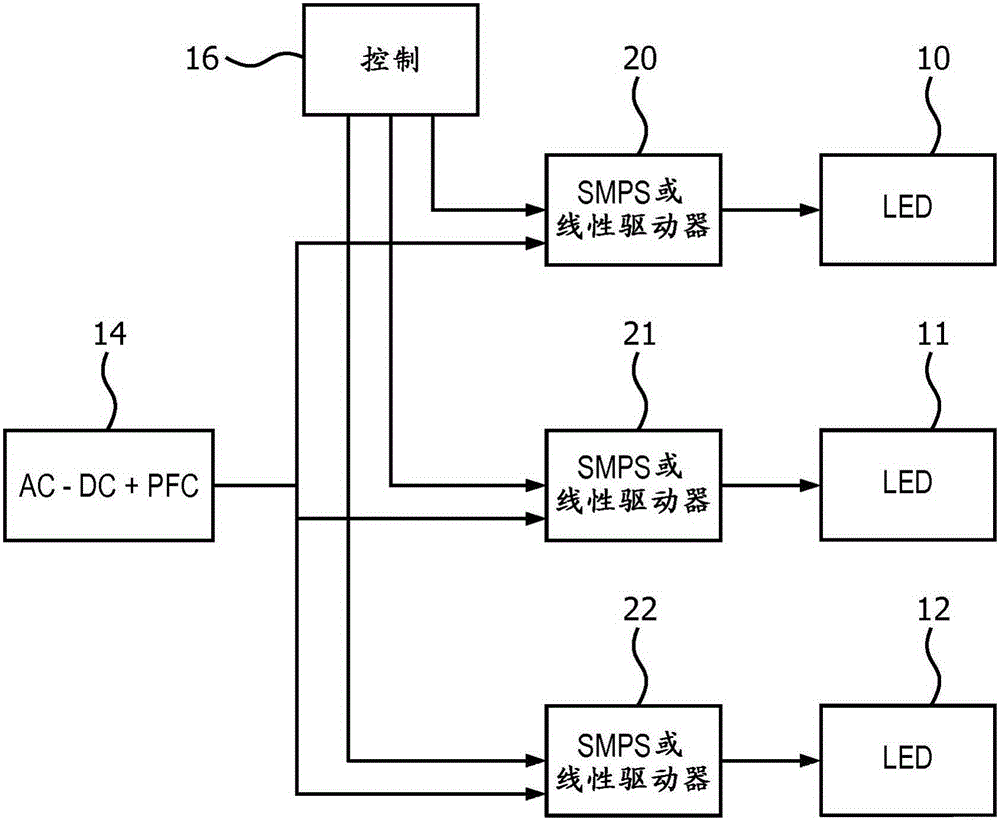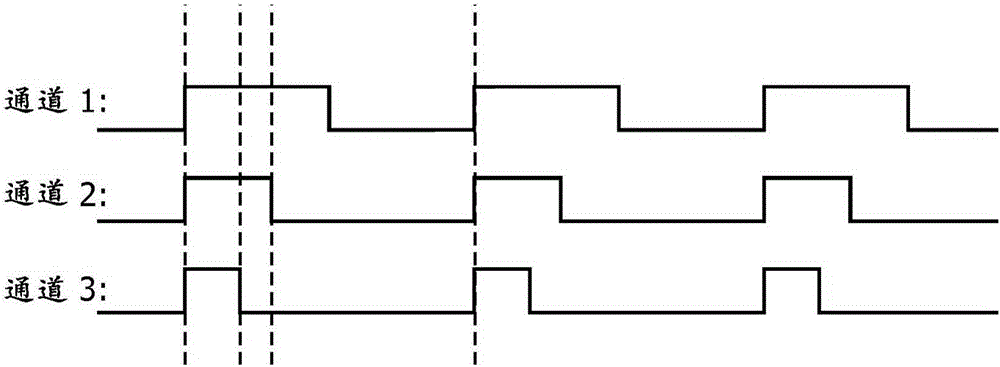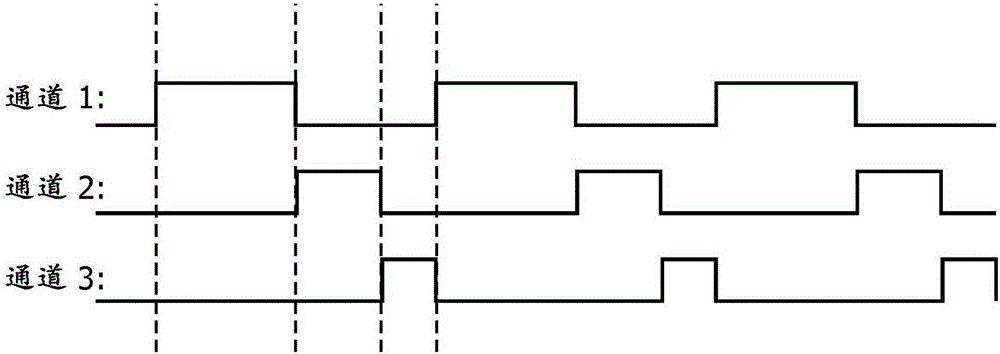A method of controlling a lighting arrangement, a lighting controller and a lighting system
A lighting device and controller technology, which is applied in the field of lighting systems, can solve problems such as inability to install and large capacitors, and achieve the effects of improving efficiency, minimizing peak power, and improving power factor
- Summary
- Abstract
- Description
- Claims
- Application Information
AI Technical Summary
Problems solved by technology
Method used
Image
Examples
Embodiment Construction
[0079] The present invention provides a lighting controller and method in which light sources are activated in a repeating phenanthrene overlapping sequence for repeated durations. The end of the duration for one light source is detected to trigger switching on of the next light source in the sequence. This provides non-overlapping control of the light sources and provides an efficient and easy to implement required controller.
[0080] The following embodiments are all lighting devices based on three light sources. However, the invention can be applied to two light sources or to more than three light sources. Each light source may comprise a single LED or a string of LEDs. Furthermore, the present invention is not limited to LEDs, and the same concept can be applied to other light source devices. However, the invention is particularly applicable to LED lighting systems with two or more channels and where space for the driver is limited, such as linear light sources.
[0081...
PUM
 Login to View More
Login to View More Abstract
Description
Claims
Application Information
 Login to View More
Login to View More - R&D
- Intellectual Property
- Life Sciences
- Materials
- Tech Scout
- Unparalleled Data Quality
- Higher Quality Content
- 60% Fewer Hallucinations
Browse by: Latest US Patents, China's latest patents, Technical Efficacy Thesaurus, Application Domain, Technology Topic, Popular Technical Reports.
© 2025 PatSnap. All rights reserved.Legal|Privacy policy|Modern Slavery Act Transparency Statement|Sitemap|About US| Contact US: help@patsnap.com



